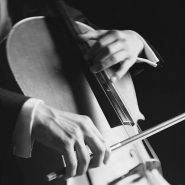Tag: scales
By Tim Janof October 27, 2019
By Michael Haber September 1, 2017
Subjects Practicing
Tags Duport, Gallamian, intonation, Janos, Michael Haber, Piatti, Popper, Practice, scales, setting goals, Starker, Starker method, technical work, Technique, trills
By Robert Jesselson February 18, 2016
By Robert Jesselson February 8, 2016
By Brandon Vamos May 5, 2011
Subjects Practicing
Tags arpeggios, Brandon, career, cello, cellobello, challenges, Experience, focus, Growth, improvement, motivation, Performing, Practice, practicing, recording, scales, scheduling, school, student, success, Summer
By Lev Mamuya December 14, 2010
Subjects Practicing, Pre-College
Tags Awareness, challenges, consistency, control, focus, intonation, Lev, Mamuya, Martha, motivation, practice habits, practicing, repertoire, scales, success, Technique, thumb position






